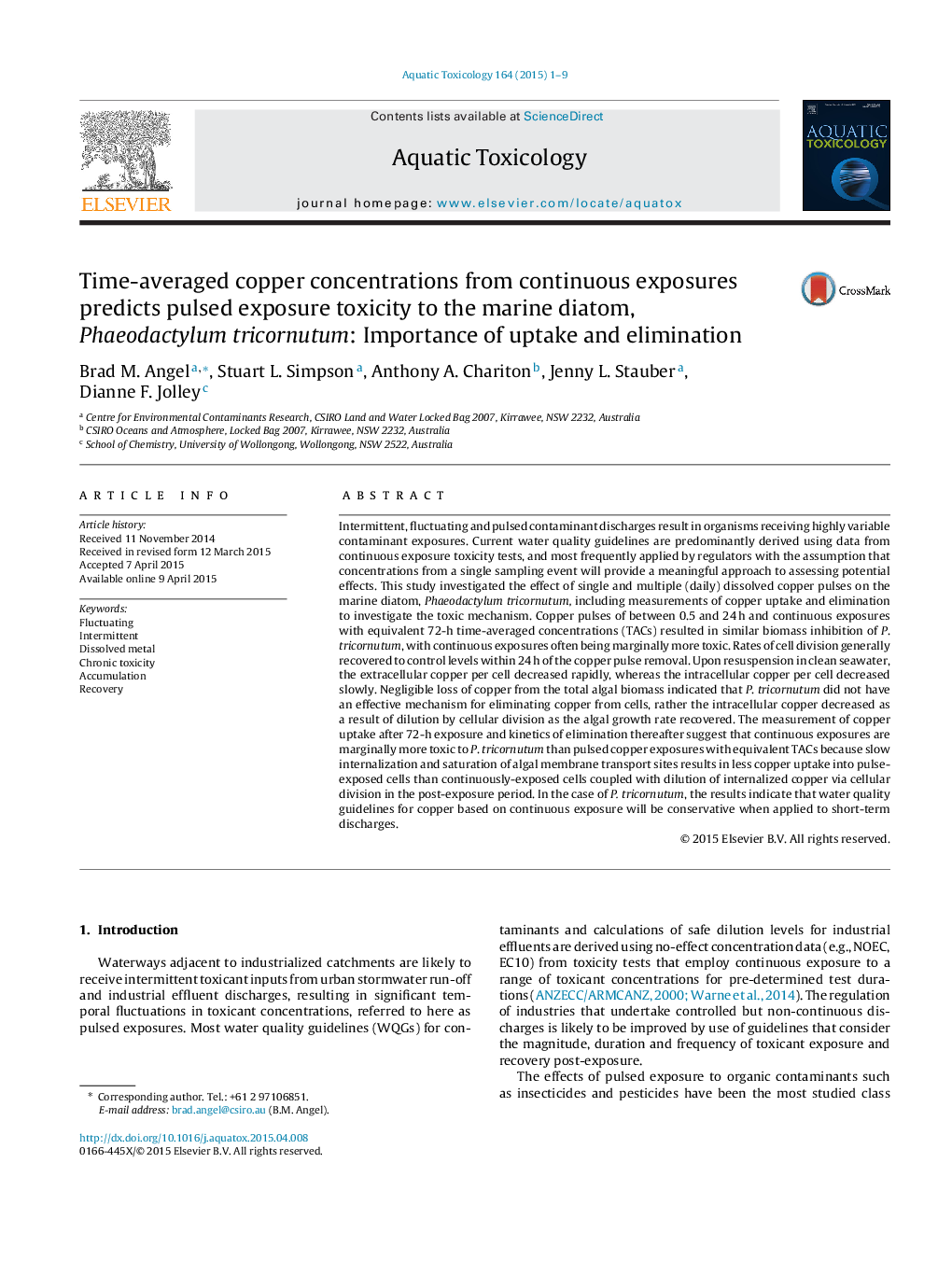| کد مقاله | کد نشریه | سال انتشار | مقاله انگلیسی | نسخه تمام متن |
|---|---|---|---|---|
| 4529062 | 1625941 | 2015 | 9 صفحه PDF | دانلود رایگان |

• Exposures with equivalent time-averaged concentrations had similar toxicity.
• Results show WQGs based on continuous exposures conservative in predicting toxicity.
• Rapid increase in toxicity as intracellular copper increased.
• Rapid loss of extracellular copper upon resuspension in clean seawater.
• Slow dilution of intracellular copper upon resuspension in clean seawater.
Intermittent, fluctuating and pulsed contaminant discharges result in organisms receiving highly variable contaminant exposures. Current water quality guidelines are predominantly derived using data from continuous exposure toxicity tests, and most frequently applied by regulators with the assumption that concentrations from a single sampling event will provide a meaningful approach to assessing potential effects. This study investigated the effect of single and multiple (daily) dissolved copper pulses on the marine diatom, Phaeodactylum tricornutum, including measurements of copper uptake and elimination to investigate the toxic mechanism. Copper pulses of between 0.5 and 24 h and continuous exposures with equivalent 72-h time-averaged concentrations (TACs) resulted in similar biomass inhibition of P. tricornutum, with continuous exposures often being marginally more toxic. Rates of cell division generally recovered to control levels within 24 h of the copper pulse removal. Upon resuspension in clean seawater, the extracellular copper per cell decreased rapidly, whereas the intracellular copper per cell decreased slowly. Negligible loss of copper from the total algal biomass indicated that P. tricornutum did not have an effective mechanism for eliminating copper from cells, rather the intracellular copper decreased as a result of dilution by cellular division as the algal growth rate recovered. The measurement of copper uptake after 72-h exposure and kinetics of elimination thereafter suggest that continuous exposures are marginally more toxic to P. tricornutum than pulsed copper exposures with equivalent TACs because slow internalization and saturation of algal membrane transport sites results in less copper uptake into pulse-exposed cells than continuously-exposed cells coupled with dilution of internalized copper via cellular division in the post-exposure period. In the case of P. tricornutum, the results indicate that water quality guidelines for copper based on continuous exposure will be conservative when applied to short-term discharges.
Journal: Aquatic Toxicology - Volume 164, July 2015, Pages 1–9